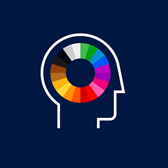
Your website looks amazing mainly because of its web design, particularly the colors used for it. But did you know that colors do more than just make your website visually appealing?
The colors used by businesses for their websites, logos, and other marketing materials aren’t there by accident. People in the marketing and advertising industries have a clear understanding of color psychology, which focuses on the associations between human behavior and colors, and apply it regularly for their web design solutions.
According to color psychology, each color has human emotions, attitudes, and responses attached to it. Red, for instance, is supposed to be the best color for creating a sense of urgency. Aside from being the color of passion and love, red can also make people react positively to ads for retail sales, which almost always use the color. After seeing ads like these, people are expected to respond by rushing to the stores that are selling items at huge discounts, so they don’t miss out.
Then there’s blue, the color that hugely successful social media networks, Facebook and Twitter, use for their website. Blue is most widely associated with coolness, calmness, and serenity, but it also represents security, stability, trust, intelligence, and reliability. All traits that businesses would very much like to project.
If a company wants to convey fun and optimism, then there is no color better suited for that than yellow. It’s the color of sunshine, after all. A close second in terms of cheerfulness is the color orange, which, incidentally, is a combination of yellow and red. That also makes orange good for creating a sense of urgency, which is probably why some calls-to-action or CTA buttons on websites are orange instead of the usual red.
Find out more about color psychology by checking out the infographic below.

